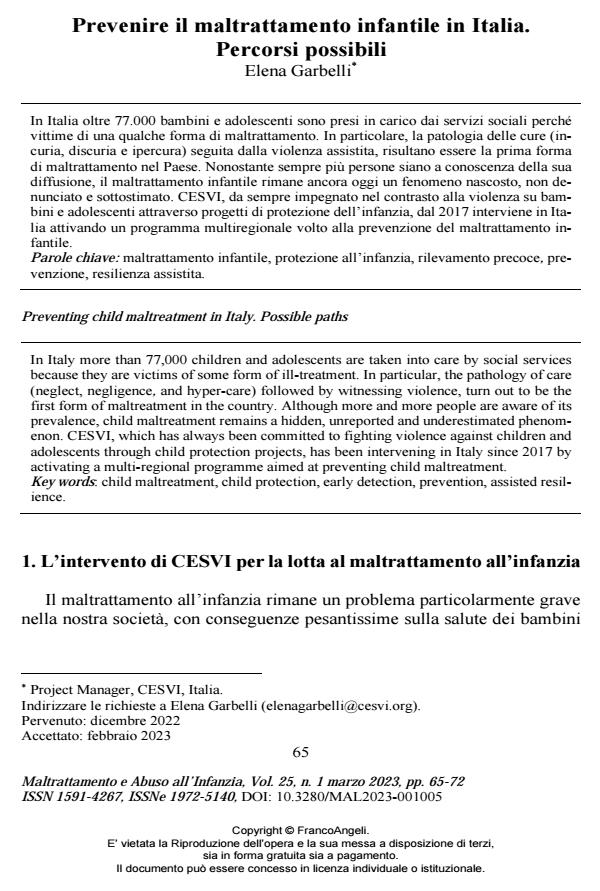Preventing child maltreatment in Italy. Possible paths
Journal title MALTRATTAMENTO E ABUSO ALL’INFANZIA
Author/s Elena Garbelli
Publishing Year 2023 Issue 2023/1
Language Italian Pages 8 P. 65-72 File size 168 KB
DOI 10.3280/MAL2023-001005
DOI is like a bar code for intellectual property: to have more infomation
click here
Below, you can see the article first page
If you want to buy this article in PDF format, you can do it, following the instructions to buy download credits

FrancoAngeli is member of Publishers International Linking Association, Inc (PILA), a not-for-profit association which run the CrossRef service enabling links to and from online scholarly content.
In Italy more than 77,000 children and adolescents are taken into care by social services because they are victims of some form of ill-treatment. In particular, the pathology of care (neglect, negligence, and hyper-care) followed by witnessing violence, turn out to be the first form of maltreatment in the country. Although more and more people are aware of its prevalence, child maltreatment remains a hidden, unreported and underestimated phenomenon. CESVI, which has always been committed to fighting violence against children and adolescents through child protection projects, has been intervening in Italy since 2017 by activating a multi-regional programme aimed at preventing child maltreatment.
Keywords: child maltreatment, child protection, early detection, prevention, assisted resilience.
- Dinamiche della parentificazione e morfogenesi post-traumatica: cPTSD e DTD Massimiliano Fierro, Elena Acquarini, in MALTRATTAMENTO E ABUSO ALL'INFANZIA 3/2024 pp.113
DOI: 10.3280/MAL2024-003006
Elena Garbelli, Prevenire il maltrattamento infantile in Italia. Percorsi possibili in "MALTRATTAMENTO E ABUSO ALL’INFANZIA" 1/2023, pp 65-72, DOI: 10.3280/MAL2023-001005